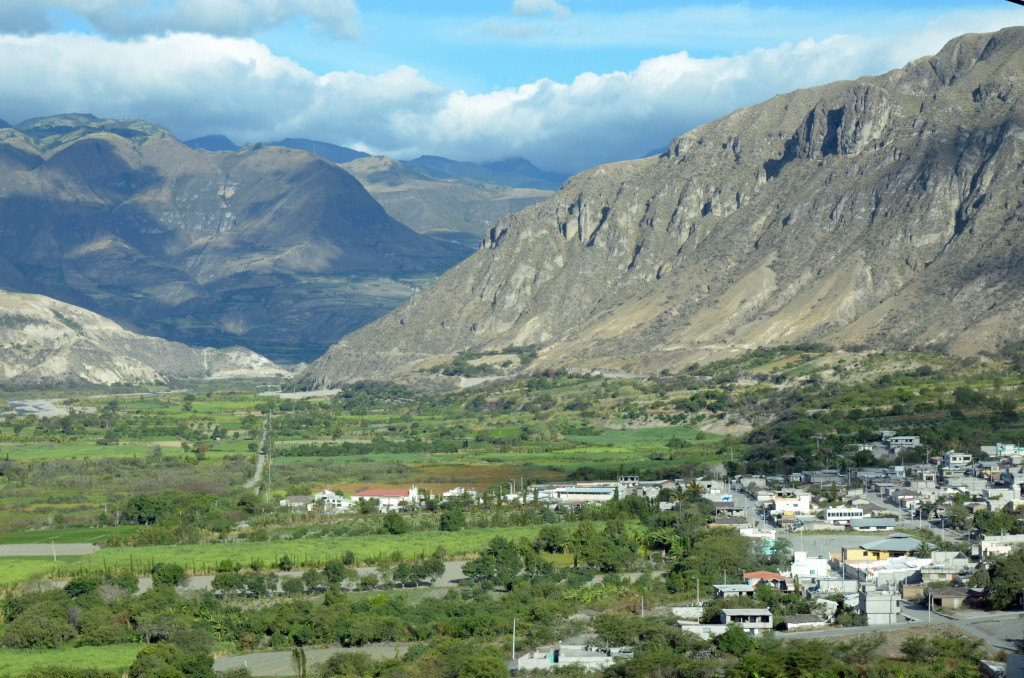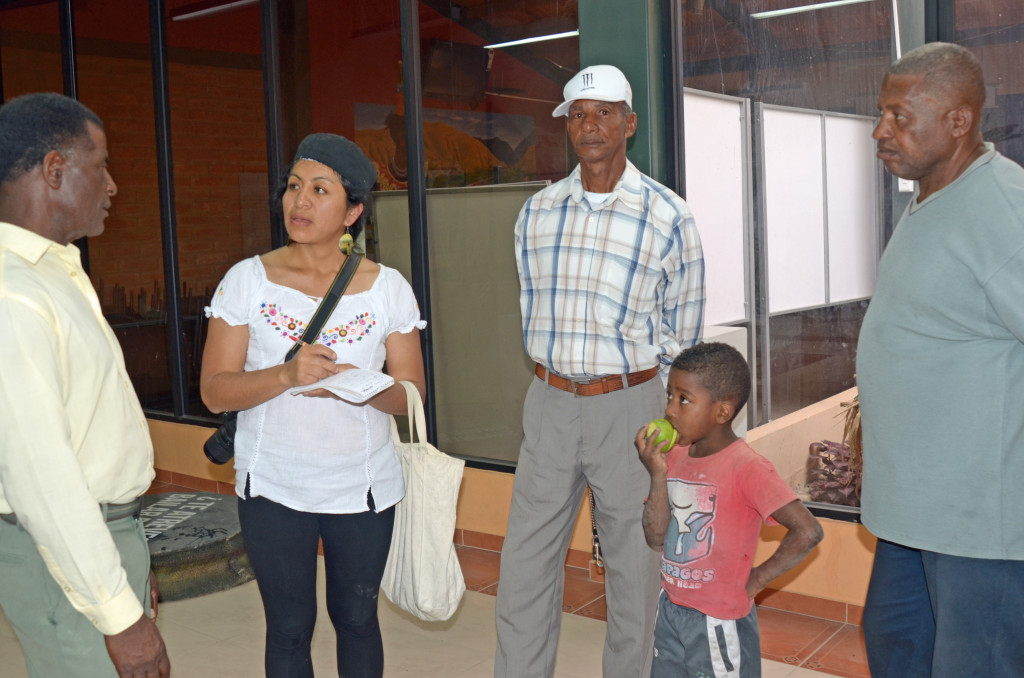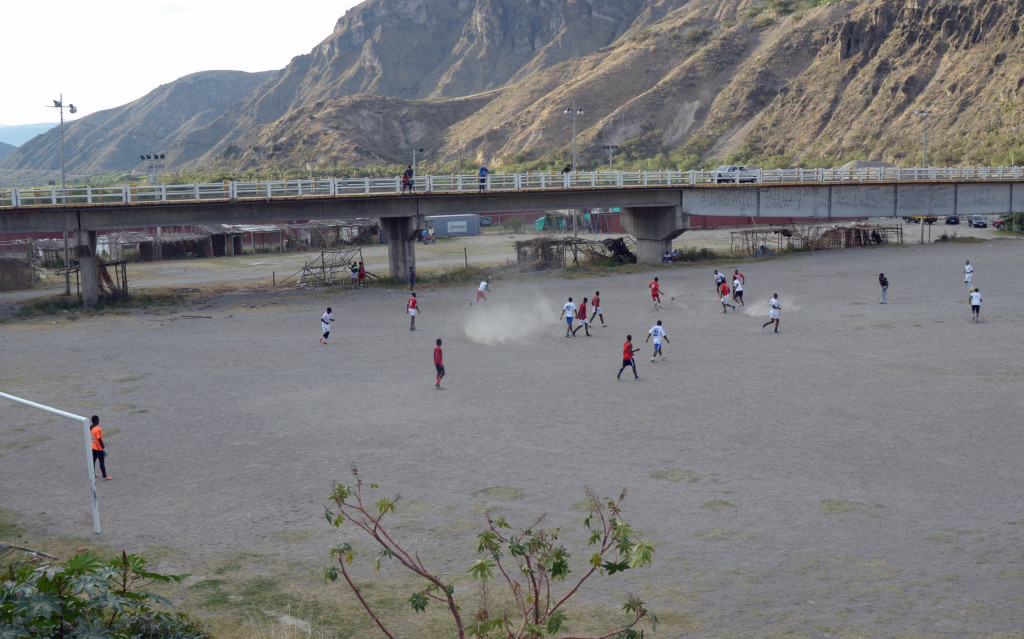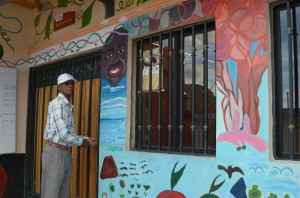Afro Ecuadorians Are Making Headlines
Oct 24, 2013
Posted in World News
By Azalia Cruz and Ken A. Epstein
Quito, Ecuador – Ecuador, a small country mostly known for the Galapagos Islands on the Pacific coast of South America, has never been on the radar for most Americans – at least until it defied the U.S. by allowing WikiLeaks editor Julian Assange to take refuge in the country’s London Embassy.
Even less well known in the U.S. is that the country is the home of a vibrant culture of Afro Ecuadorians, who make up as much as 10 percent of the population and whose soccer stars have captured global headlines.
One of the centers of Afro Ecuadorian culture lies in the Chota River Valley in the Andean highlands several hours by bus north of Quito near the border with Colombia.

Here in farming villages along the river, including Juncal, a community of 1,800 inhabitants, many of Ecuador’s best soccer players grow up practicing on dusty fields.
Juncal and the Chota Valley have entered Ecuador’s consciousness as the birthplace of one of the country’s most famous soccer stars, Augustín Delgado, nicknamed Tín. Delgado, now retired, is the all-time top scorer for the Ecuadorian national team. He played professionally in Ecuador, Mexico and England.
Other well known soccer players include Ulises de la Cruz, Edison Mendez, Kléver Chalá and Geovanny Espinoza.

On a recent trip to Chota, two Post reporters were given a tour of the town by Pedro Manuel Julio, a spokesman for Juncal and a few of the neighboring villages; Patricio Borja, who plays drums at local festivities; and Segundo Mosquera, who heads the Intercultural Community Center, which promotes Afro Ecuadorian culture and history as well as that of other countries of the African diaspora, particularly the United States.
The tour took the reporters past young men who were practicing soccer on the field near the Chota River at the edge of town. Many of Juncal’s residents were watching young women play volleyball in the center of town, knocking the ball over a net stretched across the main street.
Pedro Manuel Julio explained that most of the people are involved in agriculture, though nowadays many of the young men more interested in playing soccer. The town grows and sells tomatoes, strawberries, onions, green peppers, beans and other produce for the nearby market in the city of Ibarra.

The town has a health center, built with funds donated by soccer star Augustín Delgado.
In the cultural center, Patricio Borja, playing a drum, and Narcisa de Jesús demonstrated the Bomba del Chota, a well-known dance form in which the dancer often balances a bottle on her head.
With music that is rooted in Africa, the dance uses drums and improvisation to build relationships between the dancer and lead drummer. This music and dance is said to also have prominent Spanish, mestizo and indigenous influences in the melodies. Among the instruments that are important in the Bomba are a leaf of a tree that is used to make a special sound and gourds.
The cultural center featured large displays of Afro Ecuadorian history, as well as the Civil Rights struggle in the U.S., especially Rosa Parks and Martin Luther King Jr. A display of African American music highlighted jazz, blues, gospel and hip-hop.
One of the key problems in the town is the lack of a source of clean water. The water that the town uses comes the Chota River, which is not adequate. The town leaders are working with the government to bring water to Juncal.
Government support for irrigating the area is especially important in this valley, which has a hot climate and desert landscapes that contrast with the rest of province.
Most Afro-Ecuadorians are the descendants of slaves or escaped slaves, who originally arrived in Ecuador in the early 16th century. In 1533, the first African slaves reached Ecuador in Quito when a slave ship heading to Peru was stranded off the Ecuadorian coast.

The slaves escaped and established settlements in Esmeraldas, which became a safe haven. Eventually, they started moving from their traditional homeland and settled in Chota and other areas.